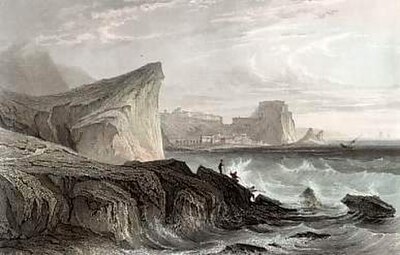Charybdis
Videos
Page
Charybdis is a sea monster in Greek mythology. Charybdis, along with the sea monster Scylla, appears as a challenge to epic characters such as Odysseus, Jason, and Aeneas. Scholarship locates her in the Strait of Messina.

The Strait of Messina, with Scylla (underlined in red) and Charybdis on the opposite shores

The narrowest point of Strait of Messina as seen from the village of Torre Faro

A 19th-century engraving of the Strait of Messina, the site associated with Scylla and Charybdis
Sea monster
Videos
Page
Sea monsters are beings from folklore believed to dwell in the sea and are often imagined to be of immense size. Marine monsters can take many forms, including sea dragons, sea serpents, or tentacled beasts. They can be slimy and scaly and are often pictured threatening ships or spouting jets of water. The definition of a "monster" is subjective; further, some sea monsters may have been based on scientifically accepted creatures, such as whales and types of giant and colossal squid.

Picture taken from a Hetzel copy of Twenty Thousand Leagues Under the Sea.

Plate c. 1544 depicting various sea monsters; compiled from the Carta marina.

Sea serpent reported by Hans Egede, Bishop of Greenland, in 1734

The St. Augustine Monster was a carcass that washed ashore near St. Augustine, Florida in 1896. It was initially postulated to be a gigantic octopus.